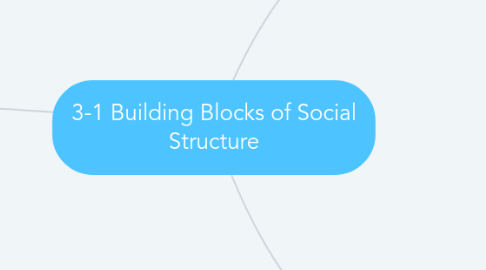3-1 Building Blocks of Social Structure
by Shaila Biswas


1. Status: a socially guided position in a group or in a society.
1.1. Ascribed Status: assigned according to qualities beyond a person's control. They are based on a person's inherited traits or are assigned automatically when a person reaches a certain age.
1.2. Achieved Status: Individuals acqure an achieved status through their own direct efforts. These efforts include special skills, knowledge, or abilities.
1.3. Master Status: The status that ranks about others. This status plays the greatest role in shaping a person's life and determining his or her social identity. It can either be achieved or ascribed. Occuptation, wealth, marital status, and parenthood can serve as a master status. A person's master status changes over time.
1.3.1. Role
2. Role: the behavior - the rights and obligations - expected of someone occupying a particular status.
2.1. Role Expectations and Role Performance: The Socially determined behaviors expected of a person performing a role are called role expectations.
2.2. Role Conflict, Role Strain, and Role Exit: Sociologists call the different roles attached to a single status a role set. The often contradictory expectations within and between our role sets can lead to role conflict and role strain. Role conflict occurs when fulfilling the role expectations of one status make it difficult to fulfil the role expectations of another status. Role strain occurs when a person has difficulty meeting the role expectations of a single status. Role exit is also where role performance does not match expectations. First they begin to experience disillusionment with the old role. Then they start to search for alternative roles. Finally they reach a turning point and make the decision to depart the old role. Conflict occurs because throughout this process, society expects the ëx"to behave according to his or her own old identity.
2.2.1. Role Set: Different roles attached to a single status
2.2.2. Role conflict: a situation that occurs when fulfilling the expectations of one status makes it difficult to fulfill the expectations of another status.
2.2.3. Role exit: The process that people go through to detach from a role that has been central to their self - identity.
2.2.4. Role Strain: A situation that occurs when a person has difficulty meeting the expectations of a single status.

